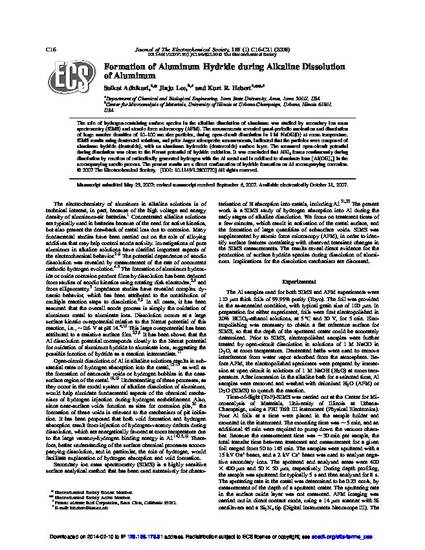
The role of hydrogen-containing surface species in the alkaline dissolution of aluminum was studied by secondary ion mass spectrometry (SIMS) and atomic force microscopy (AFM). The measurements revealed quasi-periodic nucleation and dissolution of large number densities of size particles, during open-circuit dissolution in NaOH(D) at room temperature. SIMS results using deuterated solutions, and prior Auger microprobe measurements, indicated that the particles were composed of aluminum hydride (deuteride), with an aluminum hydroxide (deuteroxide) surface layer. The measured open-circuit potential during dissolution was close to the Nernst potential of hydride oxidation. It was concluded that forms continuously during dissolution by reaction of cathodically generated hydrogen with the Al metal and is oxidized to aluminate ions in the accompanying anodic process. The present results are a direct confirmation of hydride formation on Al accompanying corrosion.
Available at: http://works.bepress.com/kurtr_hebert/21/

This article is from Journal of the Electrochemical Society 155 (2008): C16–C21, doi:10.1149/1.2800770. Posted with permission.